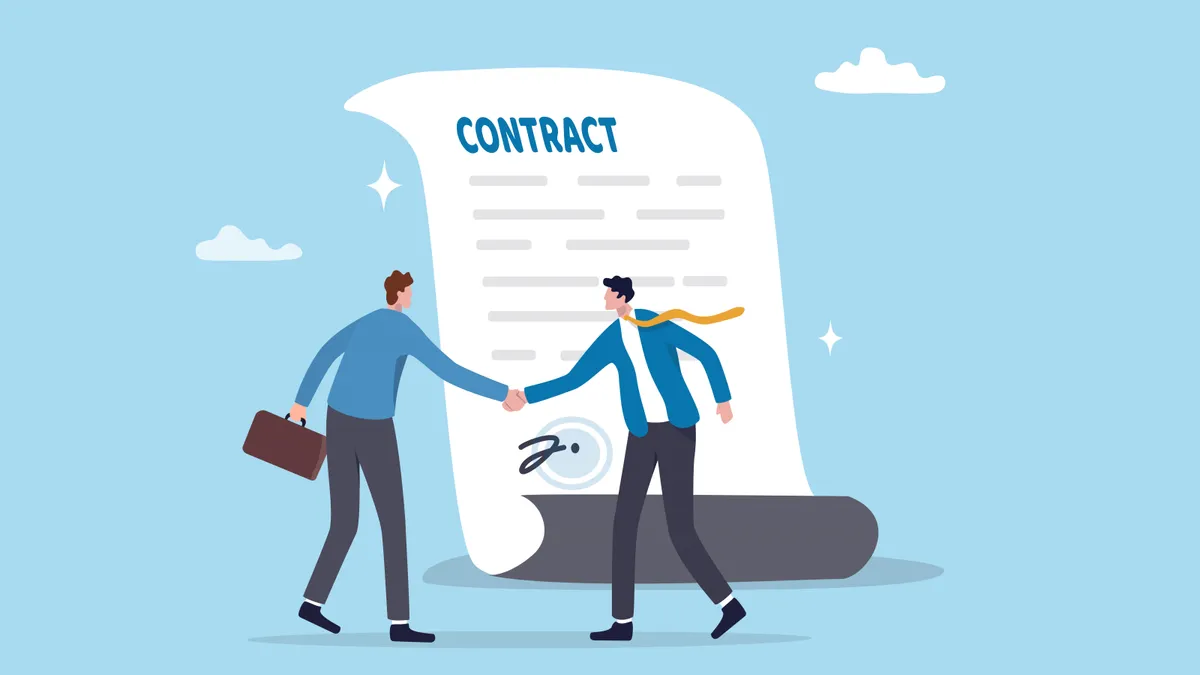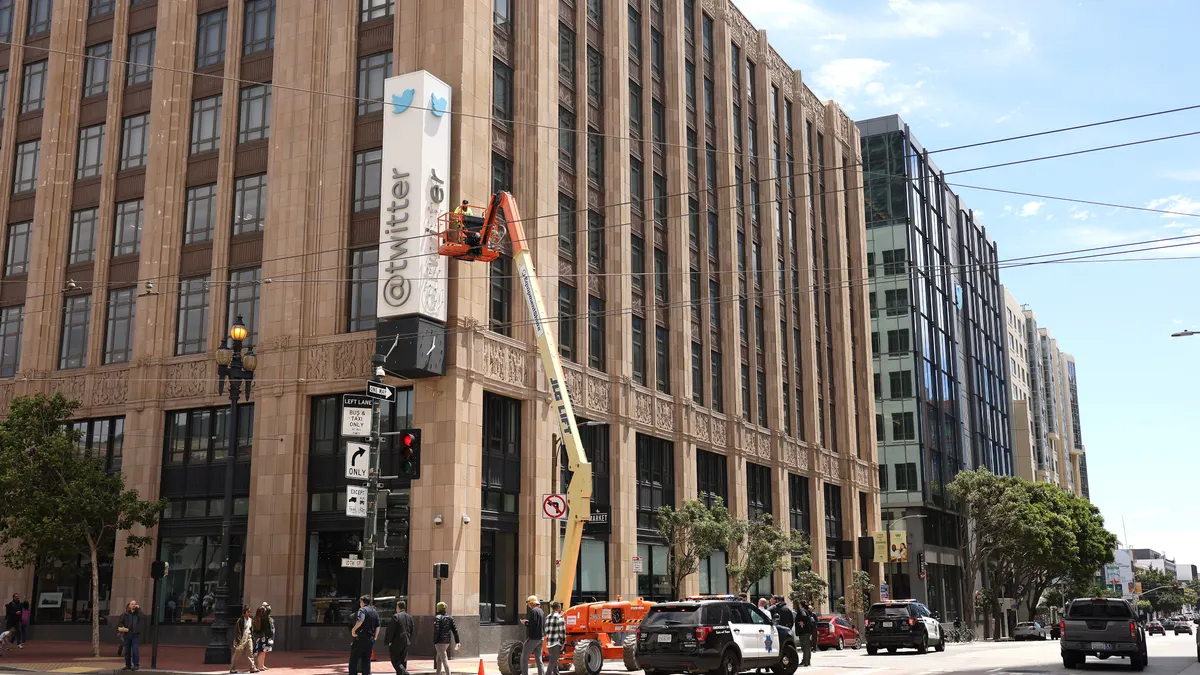Michael Callier is vice president and global head of consulting at Factor, which helps teams optimize legal transaction work. Views are the author’s own.
Contract Lifecycle Management (CLM) technology is here to stay, but how effective are in-house teams at implementing it?
The data on successful CLM tech implementations are not encouraging.
With so many failed attempts, advice abounds. Still, most articles about implementation best practices assume a good amount of control and leadership buy-in. Reality rarely meets that hope.

We’ve found that rooting advice in the ideal situation can only be so instructive. To echo Leo Tolstoy, all perfect in-house teams are alike; each team in need of change is unhappy in its own way.
Rather than give you a list of idealized initiative pointers, here’s a list of the roadblocks we’ve often seen in failed CLM tech implementations. Red flags will pop up as you move forward on your CLM journey, so we’ll share some of the right moves to travel past them.
Roadblock No. 1: Forgetting somebody
CLM technologies involve a number of stakeholders. As you develop new processes and choose systems, you’re likely to forget a key player. That’s not entirely your fault: the breadth of contracting is always larger than you realize at the start.
How will you define crucial decision makers and include them early, and how will you expand the pool of voices as your CLM tech implementation grows? Common early contributors are legal, IT, procurement, and sales, but we’re willing to bet the contracting process is more complex than you think. How will your process allow for changes in who’s in the room?
The Remedy: Make a stakeholder map at the beginning of your journey. Identify individuals and teams involved in contracting, then tie them together visually. A stakeholder map will always allow for expansion.
Roadblock No. 2: Bad contract data
Any CLM tech will only be as useful as the data within it, but you’ll likely have a mess on your hands when you begin your journey.
Initially, you have three jobs when it comes to data: 1. Knowing what you know, 2. knowing what you don’t know and 3. defining what the CLM tech will help you know. Answer all these questions before implementation begins. Don’t judge the information or stress about labeling it properly at first. When you define your knowledge-creating processes, use cases, and features, they’ll define the data hierarchies you’ll use in the long run.
The Remedy: Messy data is inevitable so embrace the messiness. You’ll create ideal structures later and use them well.
Roadblock No. 3: The danger of old habits
“Because that’s the way we’ve always done it.”
This is a common response when we question current contracting processes. We know; we aren’t judging you. And you know, which is why you called us.
Moving quickly for early stage companies means operating out of habits rather than systems. You’ll feel inclined to defend current methods. It’s human nature. But keep in mind that, while past systems have served you thus far, CLM tech implementation typically means your operating model is changing. As a result, your processes, personnel, contract artifacts, and data model will likely need to change too—not just your tech.
The Remedy: Put a sticky note on your computer screen with the words “Continuous Improvement.” Anytime you want to root yourself in the past, tap the note with your finger. Conscious action is the only way to constantly improve.
Roadblock No. 4: You can’t fix it all at once
Your team is implementing CLM tech because they hope for positive change. You sat through sales presentations and got excited about all the tool could do. Efficiency and innovation knocked at your door.
The reality is that those outcomes don’t result from a big bang event but from a process over time. You’ll have to set your boss’s expectations accordingly. We know it’s tough but it will be better than preparing for awkward updates describing how and why you haven’t progressed as promised.
The Remedy: Roadmaps are helpful here, but more important is a culture of iteration, experimentation, and good communication. Update your stakeholders regularly. Give them access to a visual map (a Kanban board, for example) so they can review progress on their own schedule. Also, experiment. Run proof of concepts in certain pockets of your organization, learn from the experience, iterate, and apply those learnings elsewhere.
Roadblock No. 5: You have no system for using consultants
This may sound self-serving, but we’ve seen many CLM tech implementations go better with outside help. The problem is that most newer contracting teams don’t have experience incorporating consultants.
Managing outside help is a discipline unto itself. This may be your first time using outside operations support; it may even feel awkward or like you’re paying someone to do what you should do yourself. Fear of information transparency is also a big obstacle to effectively coordinating with consultants.
The Remedy: Trust but verify—find consulting teams that you trust and use statements of work and project plans to clearly connect your objectives to their prospective deliverables. Your procurement department can help with this. Supply chain thinking and handoffs are natural for them because working with consultants is a very normal thing to do for most departments.
Roadblock No. 6: Your contracts are no good
This is substantive, but it’s real: your contracts may need as much work as your contracting process. In fact, they probably do.
Good contract templates and playbooks are prerequisites to effective contract management. But, like your processes, you’ve probably reactively compiled contract language as your company sped along and grew. Expect to find contracts—even commonly-used contracts—that have lots of room for improvement.
The Remedy: Make contract rationalization, optimization, and harmonization (these are all different but related activities) part of your CLM tech journey. After implementation, you’ll really struggle if you stumble over tech and substance at the same time.
Roadblock No. 7: CLM tech isn’t just a solution for legal
CLM software promises tremendous improvements. The path to achieve those improvements, however, is more often about people than technology.
Putting CLM tech in place will make you realize just how many people are connected to the contracting process. You’ll very quickly see that contract management is not a legal issue, it’s an enterprise issue. That means you have to convince many departments and individuals to jump on board. It won’t be easy.
The Remedy: Allow providers such as outside consultants to see inside your business and help bring the various stakeholders together. Encourage it, and be suspicious of any provider that doesn’t work to do the same.
Implementing CLM technology to improve contract management is a complex endeavor that can cause many stumbling steps. We’ve provided some common roadblocks we’ve seen trip up in-house teams.
If you can manage expectations, plan for pivots, and overcome these roadblocks, your implementation program has a much higher chance of success.

















